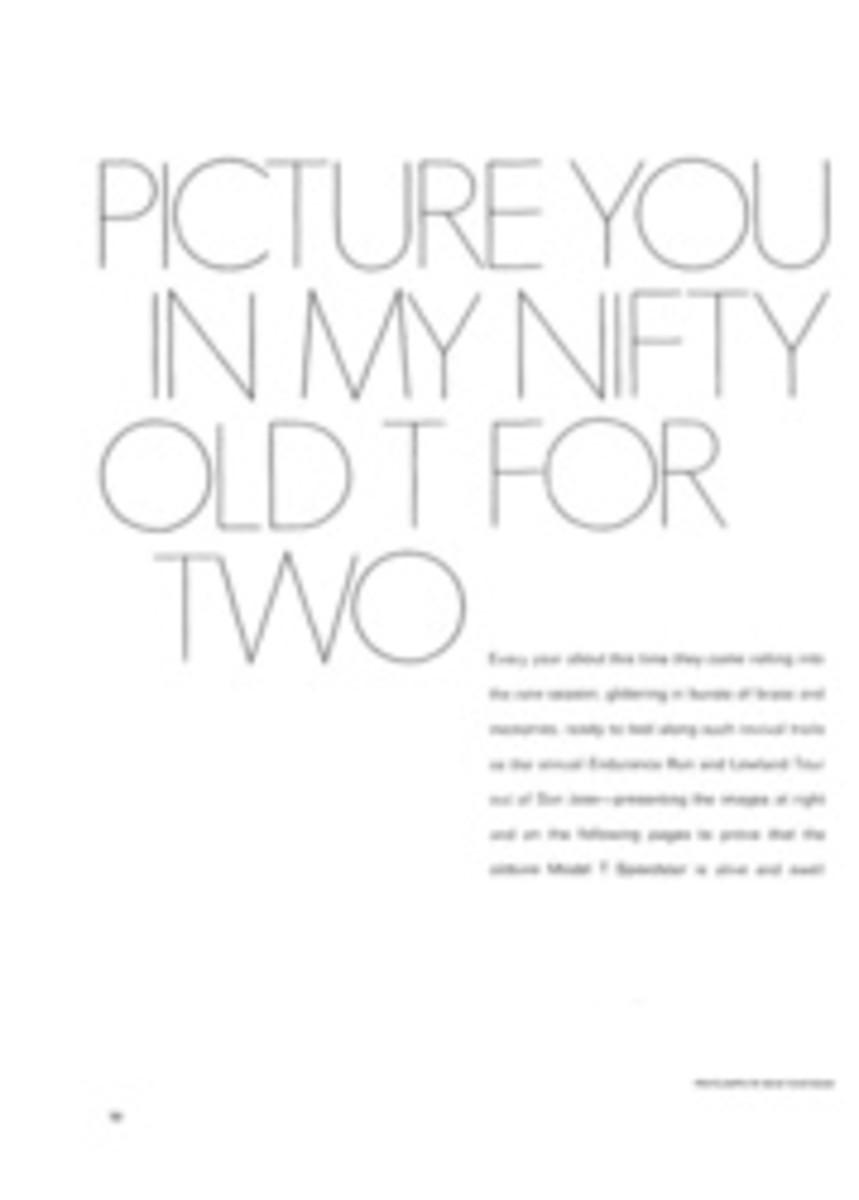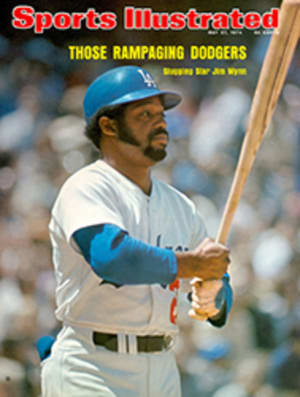
SCORECARD
BEFORE THE FALL
It is hardly a novel thought that television now calls the big shots in college football. Outrageous as it may have seemed to some, moving the Georgia Tech-Notre Dame game from Nov. 9 into summertime TV in order to beat the pros to the first Monday night spot of the year was merely the extension of a trend. The financially pressed colleges began quite a while ago to lengthen their season and—not incidentally—to inflate the value of their contract with ABC. This year it is $16 million, a handsome boodle to be cut up among the colleges and the NCAA.
UCLA and Tennessee, for another 1974 example, open on Sept. 7, two days before Tech and Notre Dame. This means the four teams will begin practice somewhere in the middle of August, as much as 41 days, in the case of UCLA, before eligible freshmen attend their first classes. Should any of the teams make it to a New Year's Day bowl game, it would be playing a 4½-month season, quite a lot of extracurricular activity for freshman student-athletes (the NCAA's preferred designation) trying to adjust to the academic life. Where, college presidents might well ask themselves, does this end? Their season now is almost as long as the pros'.
OFF-ER
Sign in a New York City bakery window: "25% off for Streakers (If in Uniform!!)"
BEST'S BEST
Thousands of soccer fans turned out on a wet and chilly evening recently to welcome the Seattle Sounders in their home debut. Just before the game a rather touching ceremony took place. The Sounders, made up of nine Englishmen, three Dutchmen, one Irishman and four Americans, lined up at midfield and waved in salute to the 12,132 spectators.
After beating Denver 4-0, the team returned to midfield, lined up and waved again. This time the happy crowd waved back. Sounder Coach John Best, a former star player in England, explained the unusual, sporting gesture. "We just felt like it. I thought to myself, 'Here's a bridge between the team and the fans. Let's show them how we feel.' " It felt fine all around.
Best's way with the English language was also charming in explaining the referee's signals, unfamiliar to some of the crowd. When the referee holds a yellow card over his head as he whistles for a foul, that is his way of saying, in Best's words, "I am cautioning you, sir. I am noting down your name because what you have done is completely out of character with this game. And if you continue, I shall be forced to eject you."
Gentlemen, that's soccer.
SENSIBLE SOLUTION
The defeat of Australia by India in the Davis Cup must get some people to thinking seriously about a new format for the old competition. Both Australia and the U.S. (which was knocked off in January by Colombia) lost because their best players either could not play or would not because of better money deals elsewhere, a circumstance the Australians had hoped to obviate by setting up a special Davis Cup trust (SCORECARD, March 11). As a result, a sham has been made of the whole competition. It is as if the Miami Dolphins lost the NFL title by using their taxi squad in the first round of conference playoffs.
The obvious solution, long proposed, is to bring together eight or 16 teams (some seeded by a board of international experts) in a concentrated tournament in one location—like the soccer World Cup. This would attract great interest and considerable receipts, at the gate and from television. A playoff pool could be established to make it worth the players' while. The best time would be in July, right after Wimbledon, or in the fall, as the season ends. All the best players would play, and the best team would win.
For the rest of this strange year almost anything can happen; it is not inconceivable that South Africa will win the Davis Cup by default if it faces opponents whose governments do not permit competition with the land of apartheid. Anyway, the Davis Cup is bound to be won by a newcomer. Since its beginning in 1900, only four nations—the U.S., France, England and Australia—have ever won the cup. Of the four, France is the only one remaining and is a real long shot. It will almost surely be eliminated by Nastase and the other Rumanians in Bucharest in July.
BEAUTY AND THE BEASTS
Photograph captions in a brochure published by Colorado's Travel Development Section say in a few words what a thousand photographs have not succeeded in getting across to a sometimes thoughtless public. Some examples:
"From the rim of the Black Canyon of the Gunnison, an empty tin can will fall 2,425 feet."
"Over billions of years screaming winds and crashing waters formed the sunset escarpment of the Colorado National Monument. Bill Young, Millville Union High School, Class of '64, signed his name to the sculpture."
"This tree was born in the time of Joan of Arc. It may have sheltered Running Deer and his young Ute squaw, been observed by Padre Juan de Cordoba, drawn lightning away from Jim Bridger. It does show that Bruce loves Helen."
"The wind that sighs gently through the high, lonely cables of the Royal Gorge Bridge can blow a greasy popcorn bag seven miles east."
THE WOOING OF WALTON
While Bill Walton remains incommunicado, others in on the negotiations that preceded his decision to sign with the NBA instead of the ABA reveal a tale unlike any before it in professional basketball. The main ingredients are luck (Portland's and the NBA's), determination (the ABA's), honor (Walton's) and, as far as can be determined in Walton's absence, a voice from above (Jerry West's).
Luck came with the coin toss for the first draft pick between the NBA's two worst teams, Portland and Philadelphia. Had the 76ers won, Walton today would be in the ABA; his chief adviser, Sam Gilbert, and ABA Commissioner Mike Storen agree on that. From the beginning Walton, a native of Southern California, insisted he would not leave the Pacific Coast. If Oregon, with its persistent rainfall, was no sunny California, it was properly clement, by Walton's thinking, compared with the chill winters of Philadelphia.
The ABA did everything but turn the U.S. map inside out to land Walton. It offered to place a team in Los Angeles to accommodate him. It agreed to put other UCLA players, beginning with Keith Wilkes and Tommy Curtis, on the same team. When it suspected that Walton—who Gilbert says never made any demands on either league—was disturbed that his L.A. team would be a weak expansion club, it offered to shift the powerful Carolina Cougars, with Billy Cunningham, et al., to the West Coast to become his teammates.
The ABA put up more money—$600,000 more to be exact—than the NBA did. The Portland offer was $1.9 million for five years, the ABA's was $2.5 million. Both offers were in real money, up front and all in cash. The younger league also worked out the details of a tentative agreement with West, who had breakfasted frequently with Walton, to coach the new team in L.A. But West never signed an ABA contract because Laker Owner Jack Kent Cooke, hardly overjoyed at the thought of a Walton-led rival in his territory, headed West off with a hefty new deal. He will be paid handsomely to either play or work in the Laker front office for seasons to come.
Walton took to the hills for 16 hours of meditation before announcing his decision. Gilbert was surprised at his choice but thinks West may have had something to do with it. "I doubt I really influenced him," says West. But he had emphasized at those breakfasts that if Walton wanted the best competition he should play in the NBA and he pointed out that the NBA was a more stable league and the travel was easier.
Whatever the reason, Walton may have given up $600,000 for nothing. Secret merger negotiations have been going on in recent months, and the NBA Players Association, which has blocked previous merger attempts, may take action at its convention in Acapulco this week that would make a marriage between the two leagues imminent. Should it work out that way, Walton may be all wet in going to Portland.
ASTROMATH
The odds against two people drawing a royal flush in the same seven-card poker hand were said to be uncomputable by those who watched just such a hand unfold before their very eyes last March in Las Vegas. "Astronomical," gasped a spokesman at the Sahara Hotel casino when Frank Rosen of Chicago turned over 10 through ace in spades and Joe Esposito of Las Vegas countered with a club royal flush.
Nonsense, says Dr. Allan N. Wilson, an aerospace computer-programming specialist from La Jolla, Calif. who is used to dealing in subjects astronomic. Author of the book The Casino Gambler's Guide, which, curiously, covers all casino games except poker, Wilson says that the chance of two specific players getting royal flushes simultaneously can be estimated very roughly as 1 in 30,940 x 30,940, or about 1 in 960,000,000. But the hands are linked, not independent, so the more exact calculation gives 3 in 2,260,003,460, or essentially 1 in 753,334,487. Wait. The more people in the game the lower the odds. With six in the game, Wilson figures the chances would be about 1 in 50,000,000, hardly your light-year statistic—more, Wilson speculates, like once every 20 years.
Oh, the pot. It was a 10¢ ante, $2-limit game. For their once-in-20-years shot, Rosen and Esposito split about a pound of bacon and new shoes for baby.
ASTRODUD
Physics, not mathematics, probably will have to solve this one, for which the possible odds against a recurrence seem truly astronomical. Bowling at normal speed on a Seattle lane last month, Larry Drennan took out the front 1-2-3-5 pins and then his ball stopped dead, right there in the middle. Left standing were the 4-6-7-8-9-10 with a fallen pin lying precariously between the ball and the 8-9-6. Like magic, which may have been the case. The name of the place is Magic Lanes.
TOP SECRET
The National Hockey League spends some $2 million each year scouting amateur players. The rival World Hockey Association goes for perhaps $200,000 at the most and last year got away with the cost of a newspaper. Clipping the results of the NHL draft, WHA teams went after the other league's highest picks and in some cases signed the players after convincing them that they wouldn't make it in the NHL right away.
"We're not going to let them do that again," said Bill Torrey, general manager of the NHL's New York Islanders. Unless the WHA has a tap on NHL telephones, the NHL draft next week will be secret. League headquarters in Montreal will call each club in order and ask the name of its selection. If the player has already been taken, the club will continue to choose until it hits a fresh prospect. The final list will not be published, no team will know the others' choices—and if the cover-up lasts more than a week there are going to be people in Washington wanting to take lessons.
ILLUSTRATION
THEY SAID IT
•Brian Downing, Chicago White Sox catcher, whose eligibility for the 1974 American League Rookie of the Year award was questioned and then confirmed: "I'm a rookie. It says so on my bubble-gum card."
•Alex Karras, on Washington Coach George Allen: "He's great to the old guys. He's got one trainer just to treat varicose veins."
•Bob Miller, N.Y. Mets relief pitcher, telling why he changed his name from Gmeinweiser: "I couldn't pronounce it myself."
•Nancy Dunkle, 6'2" basketball player, on how she hoped to cope with 6'11" and 6'7" Russian opponents: "Bite their knees."

